|
Bulletin Board Pix
The Red Book: Liber Novus, Page 16
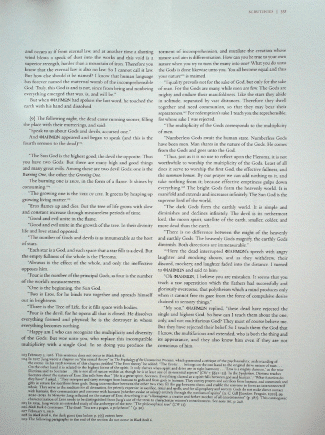
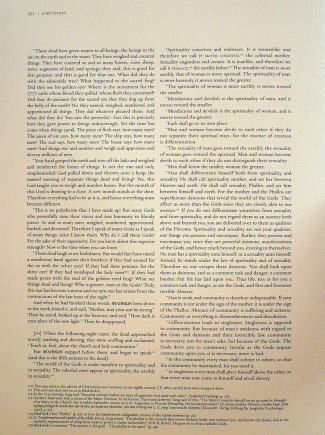
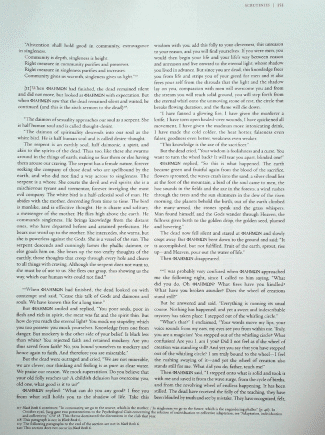
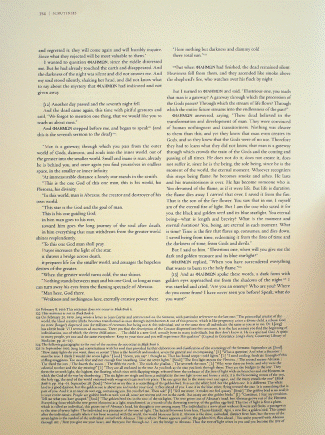
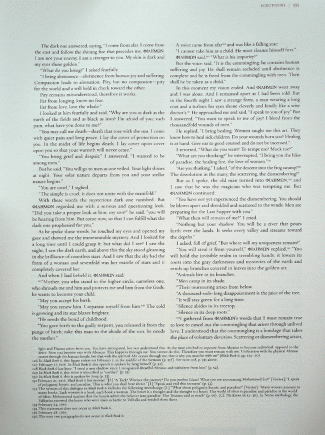
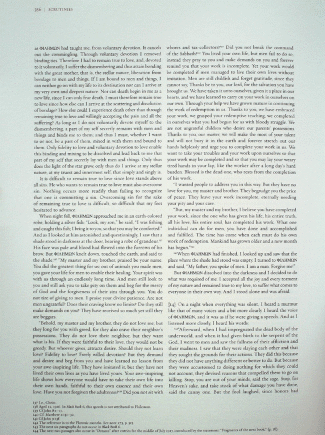
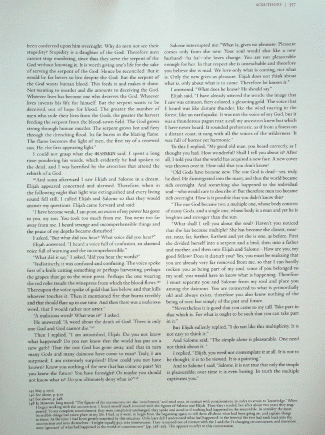
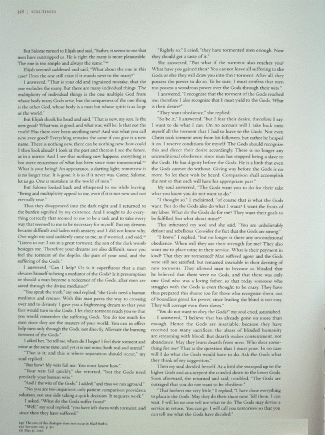
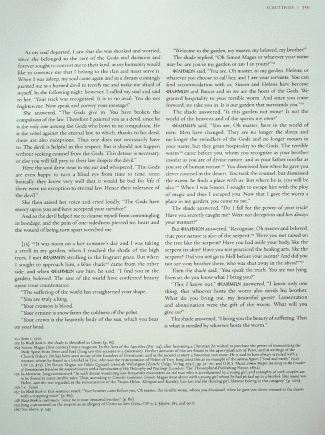
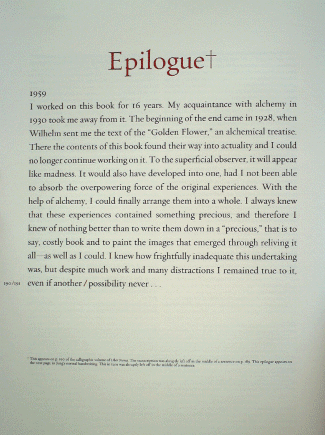
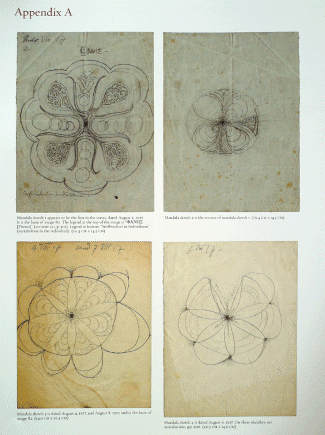
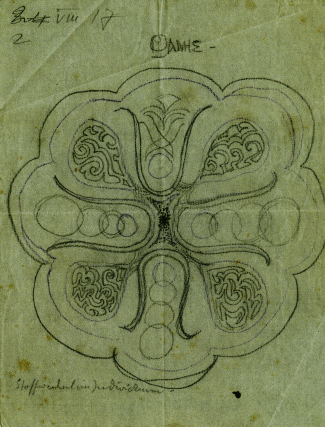 Mandala sketch 1 appears to be the first in the series, dated August
2, 1917. It is the basis of image 80. The legend at the top
of the image is __ [Phanes]" (see note 211, p. 301). Legend
at bottom: "Stoffweehsel in Individuum" (metabolism in the
individual) (19.3 CM x 14.3 CM)
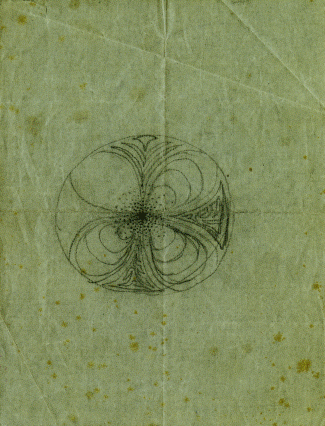 Mandala sketch 2 is the reverse of mandala sketch 1. (19.4 CM x 14.3
CM)
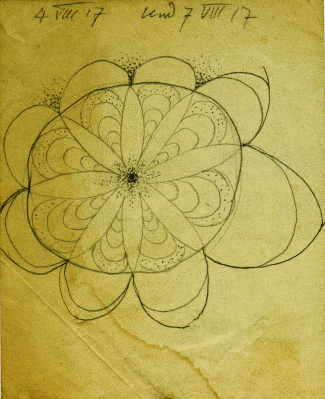 Mandala sketch 3 is dated August 4, 1917, and is the basis of image 82
(14.9 CM x 12.4 CM)
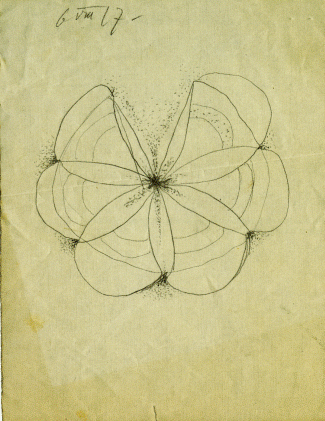 Mandala sketch 4 is dated August 6, 1917. On these sketches see
introduction, pp. 206. (20.3 CM x 14.9 CM)
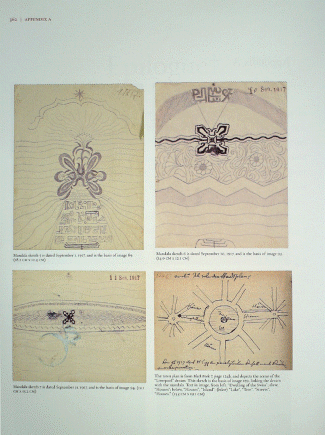
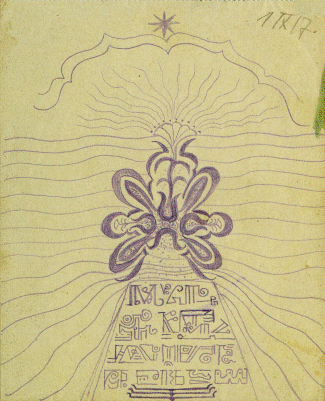 Mandala sketch 5 is dated September 1, 1917, and is the basis of image
89. (18.2 CM x 12.4 CM)
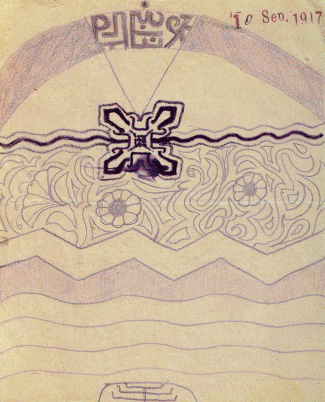 Mandala sketch 6 is dated September 10, 1917, and is the basis of
image 93. (14.9 CM x 12.1 CM)
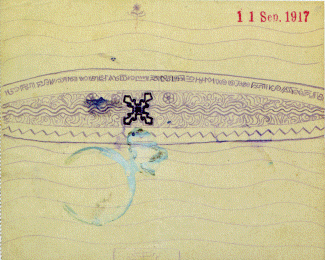 Mandala sketch 7 is dated September 11, 1917, and is the basis of
image 94. (12.1 CM x 15.2 CM)
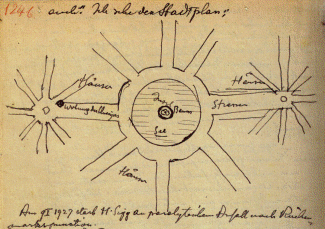 The town plan is from Black Book 7, page 124b, and depicts the scene
of the "Liverpool" dream. This sketch is the basis of image
159, linking the dream with the mandala. Text in image, from
left: "Dwelling of the Swiss": above, "Houses", below,
Houses", "Island"; (below) "Lake", "Tree", "Streets",
"Houses." (13.3 CM x 19.1 CM)
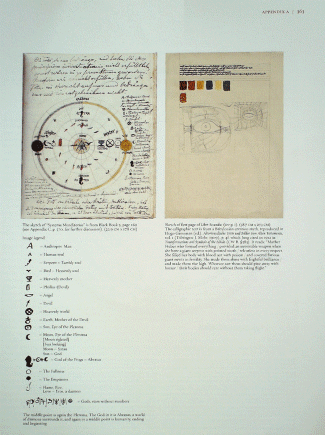
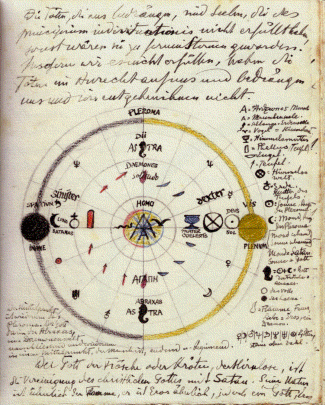 The sketch of "Systema Munditotius" is from Black Book 5, page 169
(see Appendix C, p. 370, for further discussion). (22.9 CM x
17.8 CM)
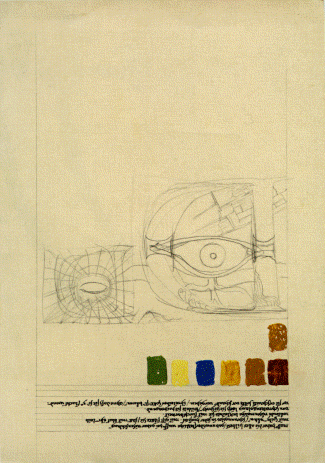 Sketch of first page of Liber Secundus (see p. 1). (38.7 CM x 27.3
CM). The calligraphic text is from a Babylonian creation
myth, reproduced in Hugo Gressman (ed.), Altorientalische
Texte und Bilder zum Alten Testamente, vol. 1 (Tubingen:),
Mohr, 1909), p. 4f, which Jung cited in 1912 in
Transformations and Symbols of the Libido (CW B. §383). It
reads: "Mother Huber who formed everything / provided an
irresistible weapon when she bore a giant serpent with
pointed tooth / relentless in every respect. She filled her
body with blood not with poison / and covered furious giant
newts in fertility. She made them shine with frightful
brilliance and made them rise high. Whoever saw them should
pine away with horror / their bodies should rear without
them taking flight."
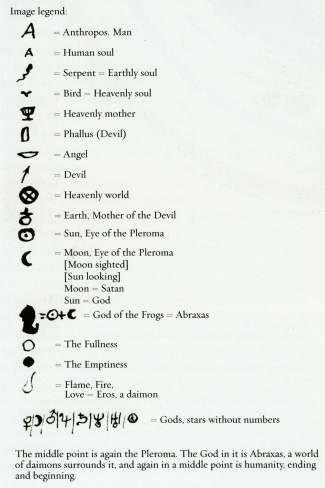 Image legend:
[Big] A = Anthropos. Man
[Little] A = Human soul
[Serpent] = Serpent = Earthly soul
[Bird] = Bird = Heavenly soul
[Chalice] = Heavenly mother
[Pillar] = Phallus (Devil)
[Crescent] = Angel
[Upward Arrow] = Devil
[Circle with X) = Heavenly world
[Upside-down female symbol] = Earth, Mother of the Devil
[Circle with dot] = Sun, Eye of the Pleroma
[Crescent Moon] = Moon, Eye of the Pleroma
[Moon sighted]
[Sun looking]
Moon = Satan
Sun = God
[Lion-faced deity] = [Circle with Dot] + [Crescent Moon] =
God of the Frogs = Abraxas
[Circle] = The Fullness
[Black Circle] = The Emptiness
[Flame] = Flame. Fire.
Love = Eros, a daimon
[Misc. symbols] = Gods, stars without numbers
The middle point is again the Pleroma. The God in it is
Abraxas, a world of daimons surrounds it, and again in a
middle point is humanity, ending and beginning.
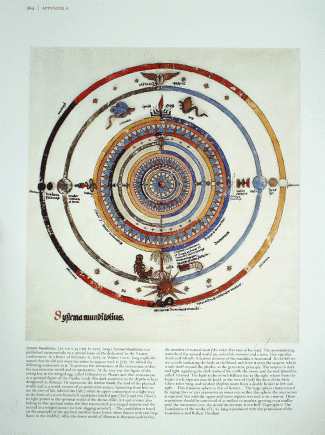
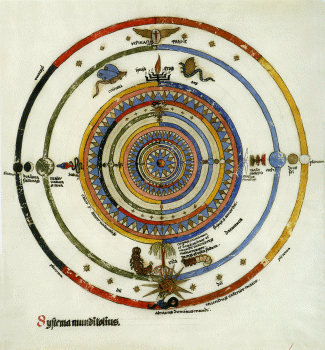 Systema Munditotius. (30 CM x 34 CM) In 1955, Jung's Systema
Munditotius was published anonymously in a special issue of
Du dedicated to the Eranos conferences. In a letter of
February 11, 1955, to Walter Corti, Jung explicitly stated
that he did not want his name to appear with it (JA). He
added the following comments to it: "It portrays the
antinomies of the microcosm within the macrocosmic world and
its antinomies. At the very top, the figure of the young boy
in the winged egg, called Erikapaios or Phanes and thus
reminiscent as a spiritual figure of the Orphic Gods. His
dark antithesis in the depths is here designated as Abraxas.
He represents the dominus mundi, the lord of the physical
world, and is a world-creator of an ambivalent nature.
Sprouting from him we see the tree of life, labeled vita
("life") while its upper counterpart is a light-tree in the
form of a seven-branched candelabra labeled ignis ("fire")
and Eros ("love"). Its light points to the spiritual world
of the divine child. Art and science also belong to this
spiritual realm, the first represented as a winged serpent
and the second as a winged mouse (as hole-digging
activity!). -- The candelabra is based on the principle of
the spiritual number three (twice-three flames with one
large flame in the middle), while the lower world of Abraxas
is characterized by five, the number of natural man (the
twice-five rays of his star). The accompanying animals of
the natural world are a devilish monster and a larva. This
signifies death and rebirth. A further division of the
mandala is horizontal. To the left we see a circle
indicating the body or the blood, and from it rears the
serpent, which winds itself around the phallus, as the
generative principle. The serpent is dark and light,
signifying the dark realm of the earth, the moon, and the
void (therefore called Satanus). The light realm of rich
fulness lies to the right, where from the bright circle
frigus sive amor dei [cold, or the love of God] the dove of
the Holy Ghost takes wing, and wisdom (Sophia) pours from a
double beaker to left and right. -- This feminine sphere is
that of heaven. -- The large sphere characterized by zigzag
lines or rays represents an inner sun; within this sphere
the macrocosm is repeated, but with the upper and lower
regions reversed as in a mirror. These repetitions should be
conceived of as endless in number, growing even smaller
until the innermost core, the actual microcosm, is reached"
Copyright © The Foundation of the works of C.G. Jung
reproduced with the permission of the Foundation and Robert
Hinshaw.
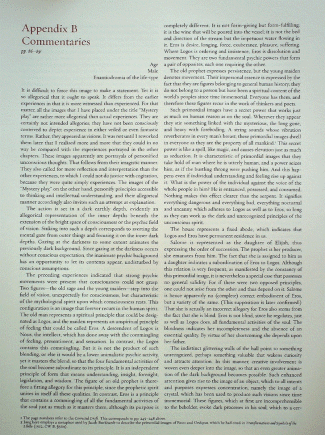
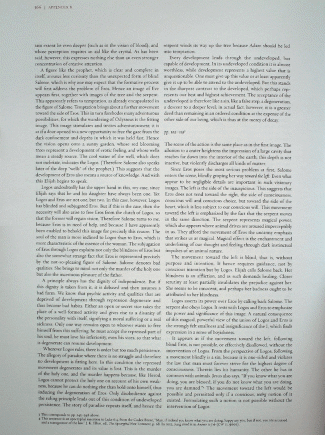
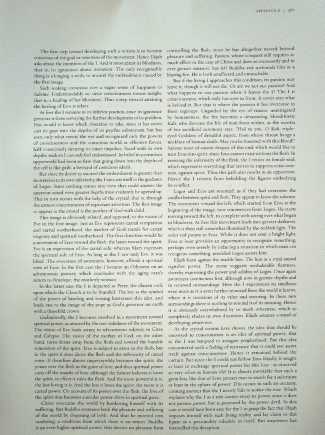
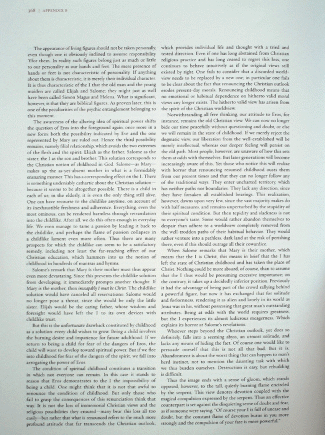
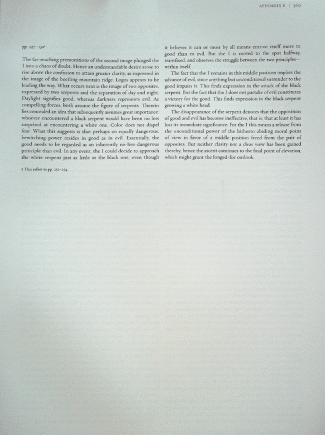
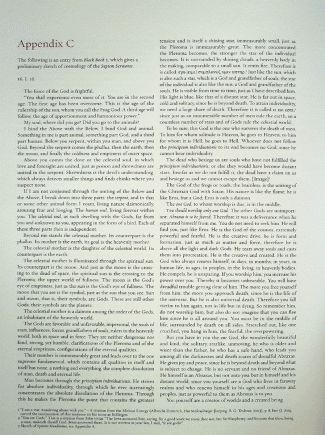
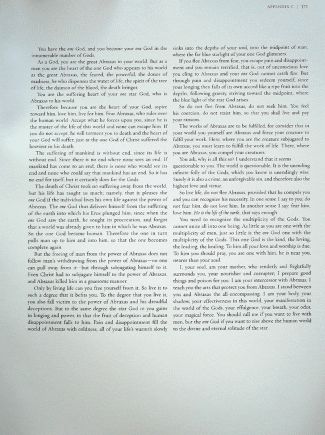
Return to Table of Contents
|